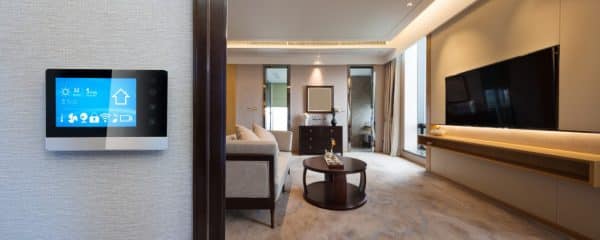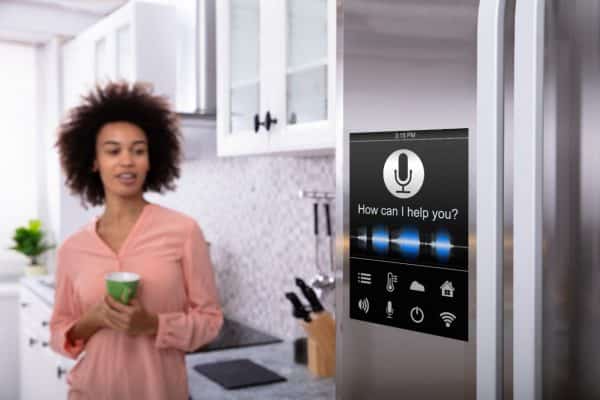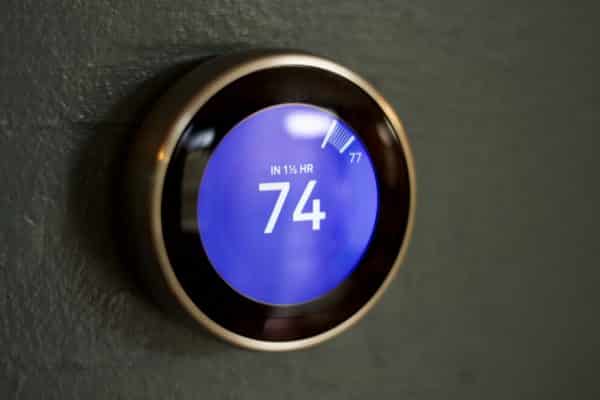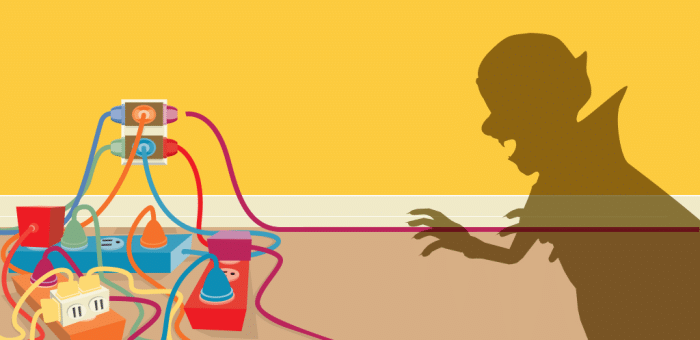You Must Understand the Technology to Make the Right Choices for Your Home
Smart homes are nothing new. Just think of The Jetsons, Star Trek, and any number of Isaac Asimov novels. For more than a century, science fiction has extolled the virtues of using technology like artificial intelligence to accomplish a wide range of household needs.
We get it! Smart home technology seems like an unabashed boon to modern society. Think of all the tasks – both technical and mundane – that could be completed for you without much thought:
- Programming your thermostat
- Optimizing your air conditioner and heater settings
- Tracking your home energy usage
- Turning off lights when you aren’t home
- Watering your lawn
- Creating a grocery list
- Notifying you when a filter needs to be replaced
- Vacuuming your floors
- Improving home security
The list is nearly endless, and more and more companies are adapting their old devices to embrace the smart home trend. But one big question remains:
“Do I really need a smart home?”
To help you answer that question, we must first help you understand what a smart home is so you can determine if you’d like to create one. Because when it comes to adopting technology, it helps to be aware of as many details as possible before diving in headfirst.
What is a Smart Home?

Fun fact! There is no single accepted definition for a smart home. Sure, in common parlance, most people equate “smart home” with “technology that makes modern life a bit simpler.” But while that description is convenient, it also understates how the technology is used and applied. There are three primary classifications of these devices:
- Automated Home – Appliances automatically and independently do work for you by design.
- Connected Home – Devices are connected to each other by a common wireless network. You control how those devices work via single hub, app, and/or controller (like your smartphone).
- Smart Home – Devices do work for you while also learning from their experiences, so they can do future work with great effectiveness and efficiency.
For example: connecting LED light bulbs to your Alexa Echo so you can adjust them with your voice doesn’t mean you have a smart home. It means you have a connected home. Why? Because you still have to do all the work yourself – even if it’s via voice commands. It’s a connected home with some automation features.
On the other hand, say you implement lighting technology wherein you can program a series of base actions. You can raise and lower the brightness of the lights based upon the time of day and your schedule. If that system starts brightening the lights at 8 p.m. all on its own because it’s dark outside, then you have a smart home. It’s adjusting its original programming based upon what its learned over time because of your preferences and human nature. Hence, you also have an automated home.
What are Some Common Smart Home Products?

Most major electronics, appliance, and home goods manufacturers make a smart or connected version of their entire product line. You can purchase doorbells, toasters, refrigerators, light switches, coffee machines, and so much more for your home. It’s easier than ever to connect your speakers to your television to your water filter to your light bulbs to your hair dryer.
It’s the ultimate in modern convenience!
So, if you’re interested in introducing smart and connected home technology to your house, we recommend the following starting points.
- Thermostat – The gold standard of connected technology. A thermostat like Nest learns your behaviors and suggests temperature settings that improve the efficiency of your HVAC system, which will save you money.
- Lighting – You can purchase connected lights and manually adjust them (like in our example above). A smart lighting system will adjust to you and improve when and how it lights your home – complete with sensors that can organically gauge activity in a room.
- Entertainment – You could buy connected speakers you can manually control with your voice. You could instead create a smart system that adjusts a range of audio and visual settings by learning your tendencies and habits. Some speakers can even change the audio quality of your speakers based upon the type of music you choose to play.
- Security System – By learning your schedule, a smart security system improves your peace of mind because it knows when you’re away from home. Thus, it can make on-the-fly adjustments to your lighting, appliances, audio, and even sprinklers to dissuade people from breaking into your home.
There are many other devices you can purchase to create your own smart home world, but those are the big four. They provide the most value and serve as the “hubs” for your entire network. The reasoning for our list is simple: not only will many of the leading devices in these categories actually learn your habits and improve their performance, but by doing so, they can improve your world.
Do I Really Need a Smart Home?

If you have a thermostat like the Nest controlling your air conditioner and heater, that’s a good start for creating a smart home. Depending upon the type of smart home you choose to create, it can deliver any number of benefits to you and your family, including:
- Increased convenience
- Improved home security
- Enhanced energy efficiency
- Lower carbon footprint
- Upgraded home improvement
Is a Smart Home right for me?
But to be totally transparent, we can’t tell you whether or not you need a smart home, even though many of our friends and customers ask us about it all the time. It comes down to who you are and what you like in your house. We recommend asking yourself a few key questions:
- Do I like technology?
- Am I willing to learn how to use technology?
- Do I understand the technology driving these innovations?
- Can I afford high-quality equipment?
- Do I like machines knowing and understanding my habits?
- Do I keep a relatively set schedule?
If the answer to any of those questions is “No,” then a smart home might not be for you. It’s not because technology is scary, and you can’t figure it out. It’s that creating a smart home that delivers the benefits promised by the technology requires a significant investment of work, effort, and money.
True smart home devices aren’t cheap, and they don’t magically connect together to become the home of the future. You have to research the devices themselves, the technology behind these modern tools, and what it takes to get everything installed and working properly.
In other words, you have to determine for yourself why you want a smart home before you buy a bunch of appliances, light bulbs, and monitoring devices. You have to balance out the theoretical appeal of such a home with the practical necessities of building and maintaining one.
Ultimately, a connected home merely carries out the programmed instructions you provided. A smart home thinks for itself and improves your quality of life. In our opinion, you can only receive the true benefits of such a home by diving in headfirst without half measures. And as The Jetsons showed us with Rosie, such a home has a lot to offer the 21st century family.


